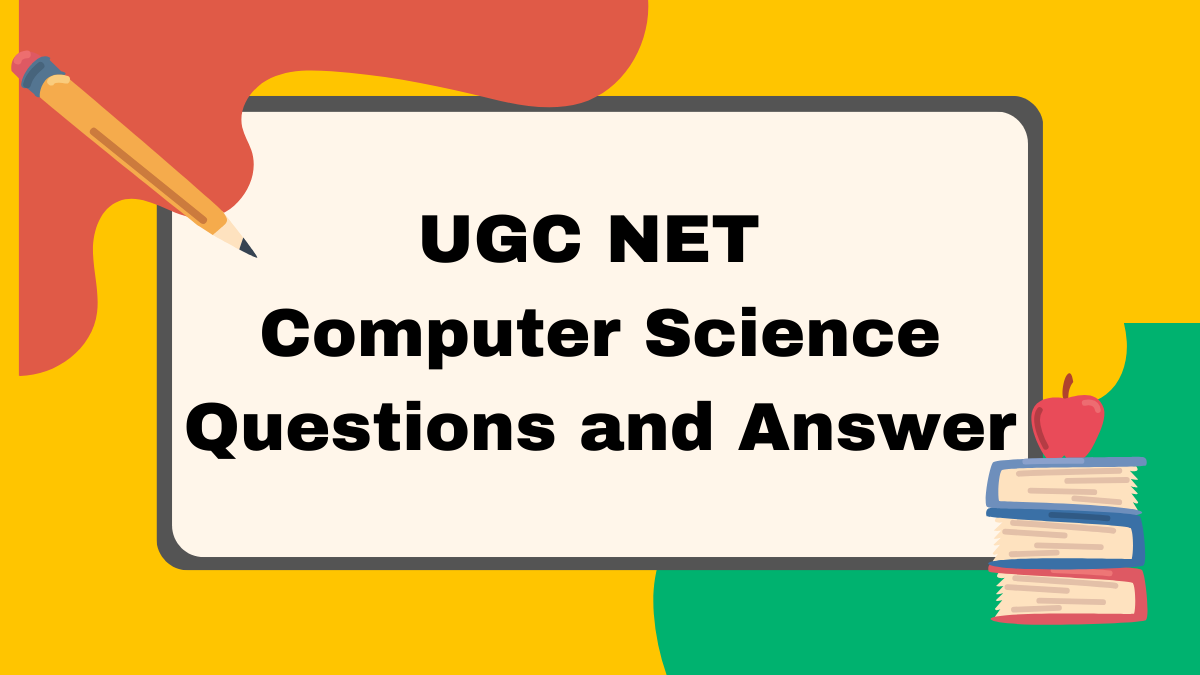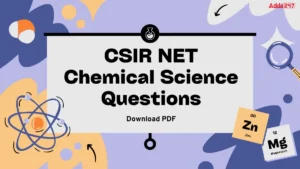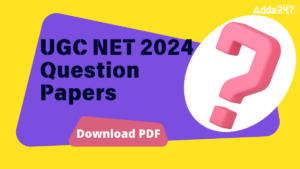Table of Contents
The University Grants Commission National Eligibility Test (UGC NET) is a highly esteemed examination in India, designed to determine the eligibility of candidates for the roles of Assistant Professors and for the awarding of Junior Research Fellowships (JRF).
The UGC NET for Computer Science is particularly significant due to the rapid growth and advancements in technology and its applications in various fields. Here we are providing the UGC NET Computer Science Questions and Answer PDF to crack the NET Examination.
UGC NET Computer Science Overview
The UGC NET for Computer Science is particularly significant due to the rapid growth and advancements in technology and its applications in various fields. Here, we provide a detailed overview of the UGC NET Computer Science Syllabus with its structure, syllabus, eligibility criteria, and preparation strategies.
Paper I
- Objective: Designed to assess the teaching/research aptitude of the candidate. It tests reasoning ability, comprehension, divergent thinking, and general awareness.
- Format: 50 multiple-choice questions (MCQs), each worth 2 marks.
- Total Marks: 100
- Duration: 1 hour
Paper II
- Objective: Focuses on the candidate’s expertise in the specific subject, in this case, Computer Science and Applications.
- Format: 100 MCQs, each worth 2 marks.
- Total Marks: 200
- Duration: 2 hours
Importance of UGC NET Computer Science Questions and Answer PDF
The UGC NET (University Grants Commission National Eligibility Test) is a highly competitive exam that determines eligibility for college and university lectureships as well as awarding Junior Research Fellowships (JRF). For Computer Science aspirants, mastering the syllabus and familiarizing themselves with the exam pattern is crucial. Here’s why using a Questions and Answer PDF is beneficial:
- Comprehensive Coverage: Ensures thorough review of all syllabus topics.
- Exam Pattern Familiarity: Helps in understanding the types and formats of questions.
- High-Yield Topics: Identifies frequently tested subjects for focused study.
- Self-Assessment: Provides a realistic gauge of preparation level.
- Time Management: Improves speed and accuracy through timed practice.
- Error Analysis: Highlights mistakes and correct solutions for better understanding.
- Strategic Preparation: Facilitates targeted and efficient study planning.
- Confidence Building: Enhances confidence through familiarity with exam-style questions.
- Revision Tool: Serves as an excellent resource for regular revision.
- Resource Efficiency: Provides consolidated material in a single document for easy access.
How to Use the UGC NET Computer Science Questions and Answer PDF
Preparing for the UGC NET Computer Science exam requires a strategic approach, and utilizing question papers and their answers is an invaluable part of this strategy. These resources offer a comprehensive understanding of the syllabus, familiarize you with the exam pattern, and provide an effective means of self-assessment.
- Download and Save: Obtain the PDF from a reliable source and save it for easy access.
- Initial Review: Skim through the document to familiarize yourself with the content.
- Organize Study Sessions: Allocate specific times to practice questions regularly.
- Simulate Exam Conditions: Practice under timed conditions to build exam-day readiness.
- Review Answers: Thoroughly check solutions and explanations for each question.
- Identify Weak Areas: Pinpoint and focus on topics where you face difficulties.
- Regular Revision: Revisit the questions periodically to reinforce learning.
- Track Progress: Keep a record of your scores and improvements over time.
- Focus on Mistakes: Analyze errors to understand and correct your weaknesses.
- Integrate with Other Resources: Use alongside textbooks and online courses for comprehensive preparation.
Download UGC NET Computer Science Questions and Answer PDF
Below we have provided the UGC NET Computer Science Questions and Answer PDF for candidate to prepare for the examination. Click on below link.
UGC NET Computer Science Questions and Answer PDF
UGC NET Computer Science Questions and Answer
Q1. Which of the following is a characteristic feature of OLED displays?
(a) Reliance on backlighting for illumination
(b) Use of a liquid crystal layer for color modulation
(c) Self-emissive properties of individual pixels
(d) Requirement of a vacuum-sealed chamber for operation
Q2. Which of the following statements accurately describes Bresenham’s line drawing algorithm?
A. It is primarily used for rendering curved lines in computer graphics.
B. It ensures that the generated line passes through all given points.
C. It minimizes the number of calculations required for drawing a line.
D. It is suitable for anti-aliasing purposes in high-resolution displays.
E. It relies on recursive subdivision for accurate line rendering.
Choose the correct answer from the options given below:
(a) A, C
(b) B, D
(c) C, E
(d) A, E
Q3. Which network topology provides high fault tolerance and scalability but requires more cabling than other topologies?
(a) Ring Topology
(b) Mesh Topology
(c) Star Topology
(d) Bus Topology
Q4. What is the primary function of HDLC (High-Level Data Link Control) in data communication?
(a) To ensure error-free transmission of data
(b) To provide flow control between sender and receiver
(c) To establish a physical connection between devices
(d) To regulate access to the communication medium
Q5. Which of the following statements about weaving in Aspect-Oriented Software Development is FALSE?
(a) Weaving is the process of integrating aspects with the base code.
(b) Weaving can occur at compile-time, load-time, or runtime.
(c) Weaving can only be done using compile-time instrumentation.
(d) Weaving allows for the modularization of crosscutting concerns.
Solutions
S1. Ans.(c)
S2. Ans.(c)
S3. Ans.(b)
S4. Ans.(a)
S5. Ans.(c)




 CSIR NET Chemical Science Questions with...
CSIR NET Chemical Science Questions with...
 UGC NET 2024-25 Question Papers 1 and 2,...
UGC NET 2024-25 Question Papers 1 and 2,...
 CSIR NET General Aptitude Questions Answ...
CSIR NET General Aptitude Questions Answ...














